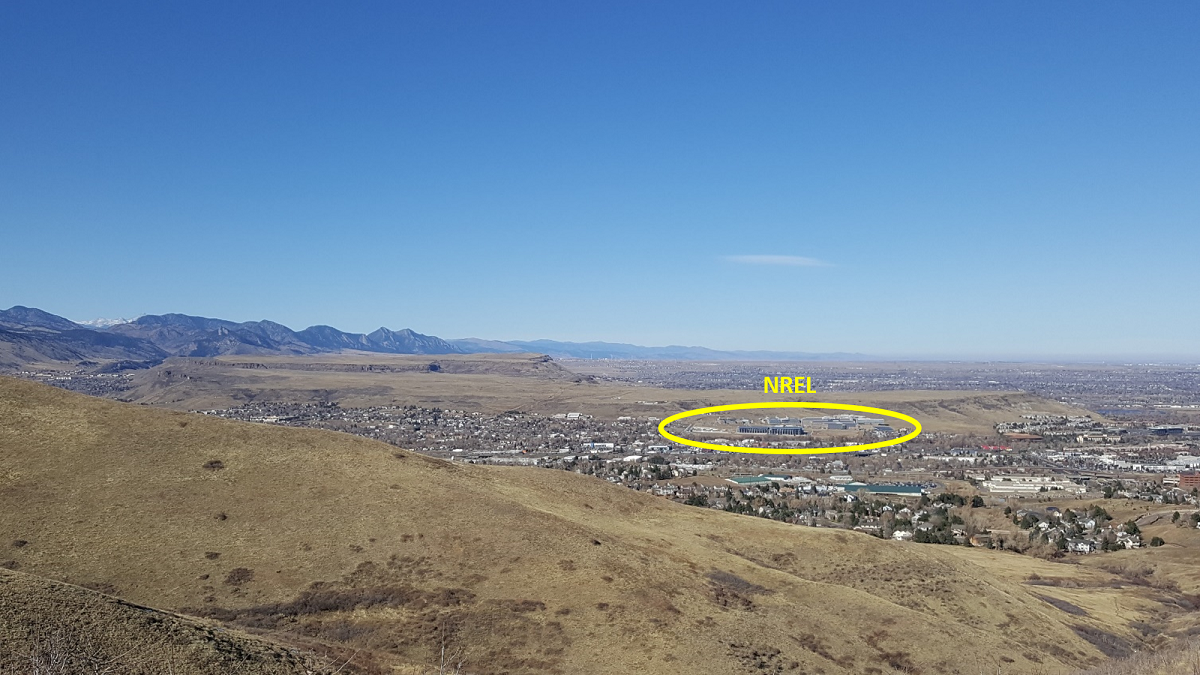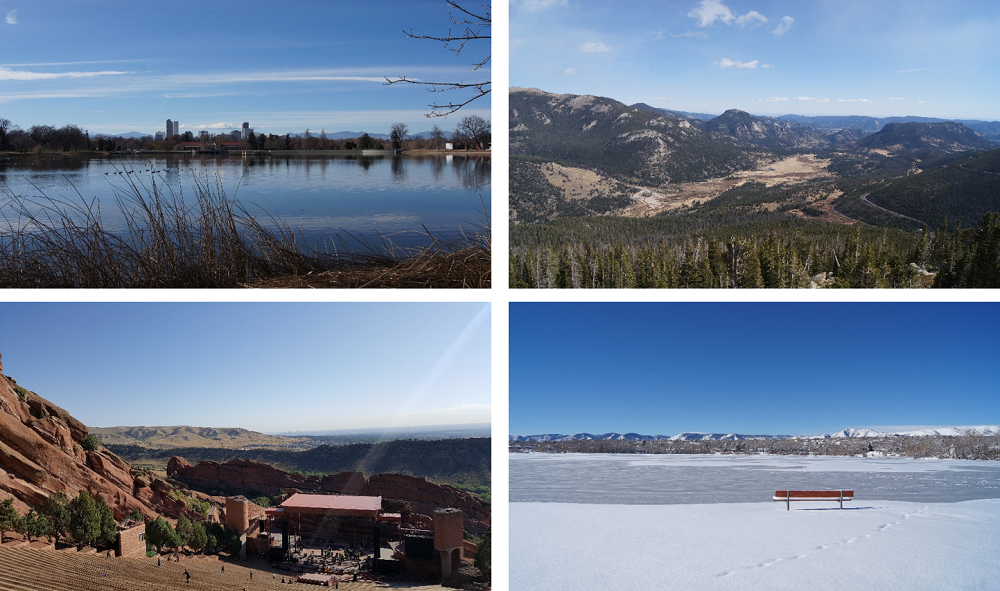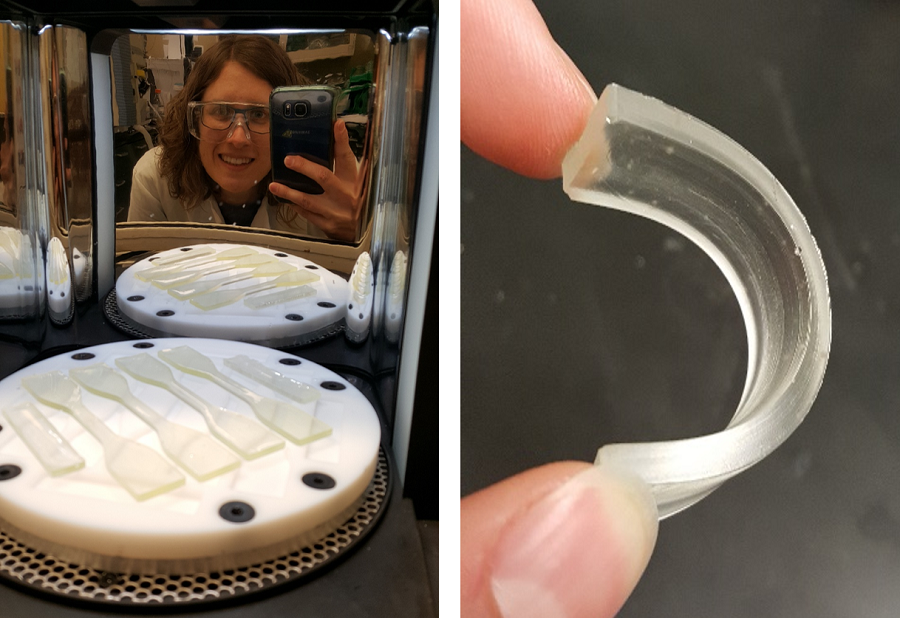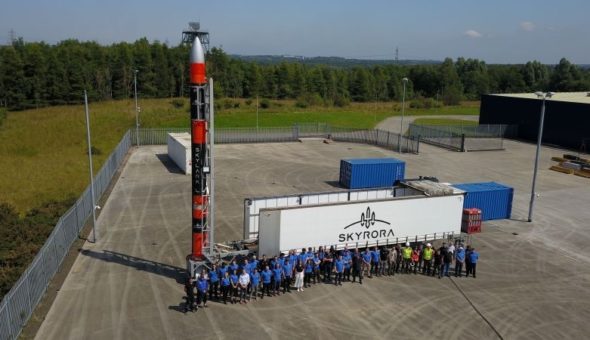Stefanie Federle is a final year PhD student at the CSCT and a FIRE Fellow who works with Professors Matthew Davidson and Janet Scott on the synthesis of new bioplastics from terpenes (a class of compounds that can be found in plants). As part of her PhD, she undertook an internship at the National Renewable Energy Laboratory (NREL*) in Golden, USA (near Denver, Colorado).
Research at NREL mainly focuses on renewable energy, such as photovoltaics, wind energy and bioenergy. More recently, NREL has also moved into other renewable areas like bio-derived bulk chemicals and renewable plastics. Plastics are mainly made up of polymers, which are basically long chains of repeating molecule units.
How did I end up doing my internship at NREL?
It all started back in May 2019, when I attended the joint symposium between the CSCT and the US Department of Energy. One of the speakers was Dr Phil Pienkos from NREL who presented his work on algae processing and upgrading. Although a very interesting topic, I was more interested in a side project he mentioned that looked at bio-based polymers from algae oil and other lipids, particularly focussing on a type of polymer called non-isocyanate polyurethanes (NIPU). NIPU polymers are a more environmentally friendly alternative to polyurethane (PU) polymers because less toxic chemicals are used to produce them. They can be applied in coatings, composites, construction or biomedicine. Since I am working on bio-based plastics myself for my PhD project and was hoping to do some work on NIPU, this caught my attention. So, I reached out to Phil and his co-worker Dr Tao Dong and, after a fruitful discussion about possible projects, decided to spend my internship at NREL combining my work on terpene-based polymers with their work on lipid-based polymers.
What was it like living in the US/Colorado/Denver?
The first thing I had to learn when moving to Colorado was that everything is bigger and further away compared to Europe. Getting around by public transport, bike or walking - as you do in Bath - was not as easy. Public transport in the UK is much more widespread and efficient than in Colorado, so I decided to get a bike to have more flexibility moving around Golden and Denver. Unfortunately, I had to stop cycling once the winter started and the snow came, which first happened on 10th October. Fortunately, some amazing people at NREL were more than happy to give me lifts to work and other places.
Another huge difference was the weather, which is pretty much the opposite to the UK: a dry climate with very low humidity and lots of sunshine. Denver is called the Mile High City because it is one mile above sea level and, as a result, it gets plenty of snow in winter. However, I quickly learned that the weather in Colorado is just crazy sometimes – it can be 27°C one day and snowing the next, so I was constantly checking the weather forecast. Still, plenty of sunshine and lots of snow were a nice alternative to the grey, rainy UK winter.
During the weekends, I kept myself busy exploring Denver and the surrounding areas. I enjoyed hiking in the beautiful Rocky Mountains and, of course, I also loved skiing there.
What is working at NREL like?
Although I was eager to start my lab work as soon as possible and make the most of my time at NREL, it took about three weeks for me to clear all their health and safety training and be allowed to start work. A safe and supportive work environment really is one of the core values at NREL.
The work environment was very interdisciplinary, which allowed me to have discussions about all sorts of projects with people from different science and engineering backgrounds. These discussions have definitely helped me to think differently about certain aspects of my own research.
How did the research project progress?
My PhD project in Bath focusses on the synthesis of new polymers from plant-derived terpenes. These are a renewable alternative to current polymers, which are made from crude oil. At NREL I set out to combine my work on terpenes with algae oil and other lipids.
Trying to shift from a small scale, fundamental chemistry point of view to a more application-driven approach, I realised quickly that up-scaling some of my terpenes work was too difficult, mainly because purification methods used up too much solvent. I also found out that doing organic synthesis in a 5L flask is not as fun as it sounds.
So, I decided to continue working on the terpene polymers and algae oil polymers separately. I learned about different analytical methods for lipids, tried out new ways to make foams and used new methods to make plastics from algae oil. Besides, thanks to a researcher from another group and his expertise, my terpene work experienced a huge boost. I was able to develop terpene-derived rubbers, which was one of the main achievements of my internship!
What was the most valuable thing you learnt during your internship?
While my PhD work in Bath mostly followed a linear path focussing on one feedstock (terpenes), here I had to divide my time between various projects, as most researchers do at NREL. I enjoyed being taken out of my comfort zone and quickly adjusted to the new working conditions. I worked on multiple projects at the same time, which definitely improved my time management and organisational skills. At the same time, I learned to be more flexible with the direction of my research. From the beginning, I tried to focus on the most significant outcomes and I learned to target the most important issues. I became braver with giving up on experiments that do not work and prioritising more fruitful research.
Research-wise, this internship has helped me to conduct my research with a clearer vision. I also learned that collaboration and exchange with other researchers can be extremely useful to spark new research ideas – you never know what different backgrounds and expertise can bring to the table until you start talking to people!
What was most challenging?
It might sound funny, but for me, the most challenging part of the internship was that it felt a bit like starting my PhD all over again. It took a while to settle into a new lab environment and I started to feel the final year PhD pressure getting to me. So, at the beginning of my internship, I felt like I couldn’t achieve as much as I wanted. In the end, I had to learn to endure this time of settling in and try to make the best out of it. Also, not having my Bath PhD peers nearby was a bit challenging at times.
What was the best part?
The best part was finally producing a bio-based polymer that I could hold in my hand. To feel its properties and see its potential applications was a great reward.
Outside of work, the highlight was definitely skiing in the Rocky Mountains. The snow there is definitely the best – so powdery and soft.
Any final words?
If you have the opportunity to do an internship – do it! There will be ups and downs, but it’s definitely worth the experience!
If you have the opportunity to go to Colorado – you should definitely go, but be prepared for crazy weather!
I would like to thank Dr Phil Pienkos and Dr Tao Dong for taking me on at NREL, for supporting me, challenging me and for inspiring conversations. Furthermore, I would like to thank the CSCT as well as the Doctoral College Placement Support Fund for making this internship possible by supporting me financially.
*NREL is a national laboratory of the U.S. Department of Energy, Office of Energy Efficiency and Renewable Energy, operated by the Alliance for Sustainable Energy, LLC.
Respond






